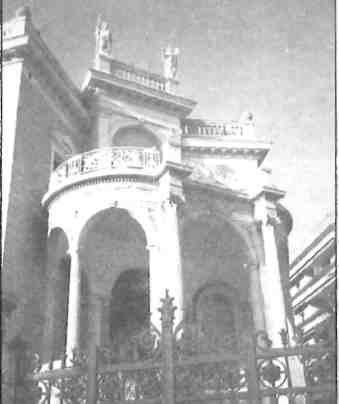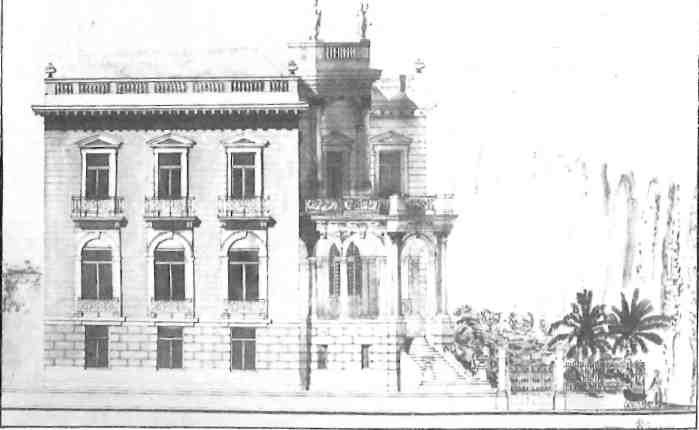
Greece’s recent history – and in many ways its wealth – is bound up with some of the families who built the palatial mansions strung along Vas. Sophias. One of the loveliest was built in 1895 for Othon Stathatos, the patriarch of one such family, on the corner of Irodotou.
Stathatos, one of eight children, came to Athens from the island of Ithaca and became involved with the coal industry. He not only became tremendously successful, but established warehouses from Odessa to Marseilles and acquired a large fleet of ships.
Becoming quite wealthy, Stathatos and his wife Athena contracted the well-known German architect Ernst Ziller to build their home. Ziller was the prolific architect who designed, among many other public and private buildings, the Royal Palace, the former post office on Kodzias Square, the Schliemann mansion and the Evelpidon School buildings, now the city court. The result is the beautiful residence we now see, which was purchased by the Greek government in late 1983 to accommodate visiting heads of state and other guests of distinction. Newer than the other remaining mansions, the Stathatos residence is still nine years short of its centennial.
Fortunately, these dowager mansions carry their years well and periodic restorations and modernizations cover any chips or wrinkles belying their age. The current restoration being supervised by architect Pavlos Kalligas is no exception.
Kalligas gives full credit to the turn-of-the-century architect for utilizing the space to the greatest effect and providing a building whose original plan was excellent. The mansion is unique in that it is oriented to the corner instead of being square and facing the street. The architect’s clever use of circles and angles provided ample room for entertaining, as well as areas for the family.
Through the years the house has been modernized and restored as necessary. Around 1929, with Stathatos. advancing in years, he installed – what was then a most unusual object in Greece – an elevator. In fact, it was said to be either the seventh or eighth such newfangled invention in the entire country. This installation was made straight up through the stairwell which, while utilitarian, destroyed the symmetry of the floor plan and has since been removed.
Upon his death a great deal of his wealth, including the mansion, passed to Stathatos’ wife. Other major bequests and gifts during his lifetime included a church in Ithaca, the water reservoir of the island and major donations to the Odeon of Athens.

Although remaining continuously in the Stathatos family, the house was leased to the Hungarian Embassy for a period during World War II, then to the Canadian Embassy and most recently to the Libyan Mission. Becoming a historical protected property, the house was contracted by its current heirs for careful restoration in 1976 – also by Pavlos Kalligas, whose father had discovered the original plans for the house in the archives when he was director of the National Gallery. Hundreds of photographs and as many drawings have enabled the restoration architect and contractor to remain true to the original plans in almost every respect. Modernization of service areas has, of course, been extensive. For instance, the carriage barn and stable on Irodotou have been moved closer to the street and totally renovated into living space.
Many Athenians were aware that one of the statues from the front facade fell during the major earthquake in 1980, but fewer noted that Athena had already lost her head. Fortunately, with the aid of photographs, both of the statues have been copied exactly by a Greek sculptor and once again Athena and the goddess Estia are outlined effectively against the sky.
And so, for a reported outlay of 650 million drachmas, covering the total purchase price, cost of complete renovation and restoration, including the modern necessity of security measures and complete furnishing down to the last teacup that will grace the sumptuous board, the government has acquired a historical mansion that any distinguished visitor will find both warm and inviting.







